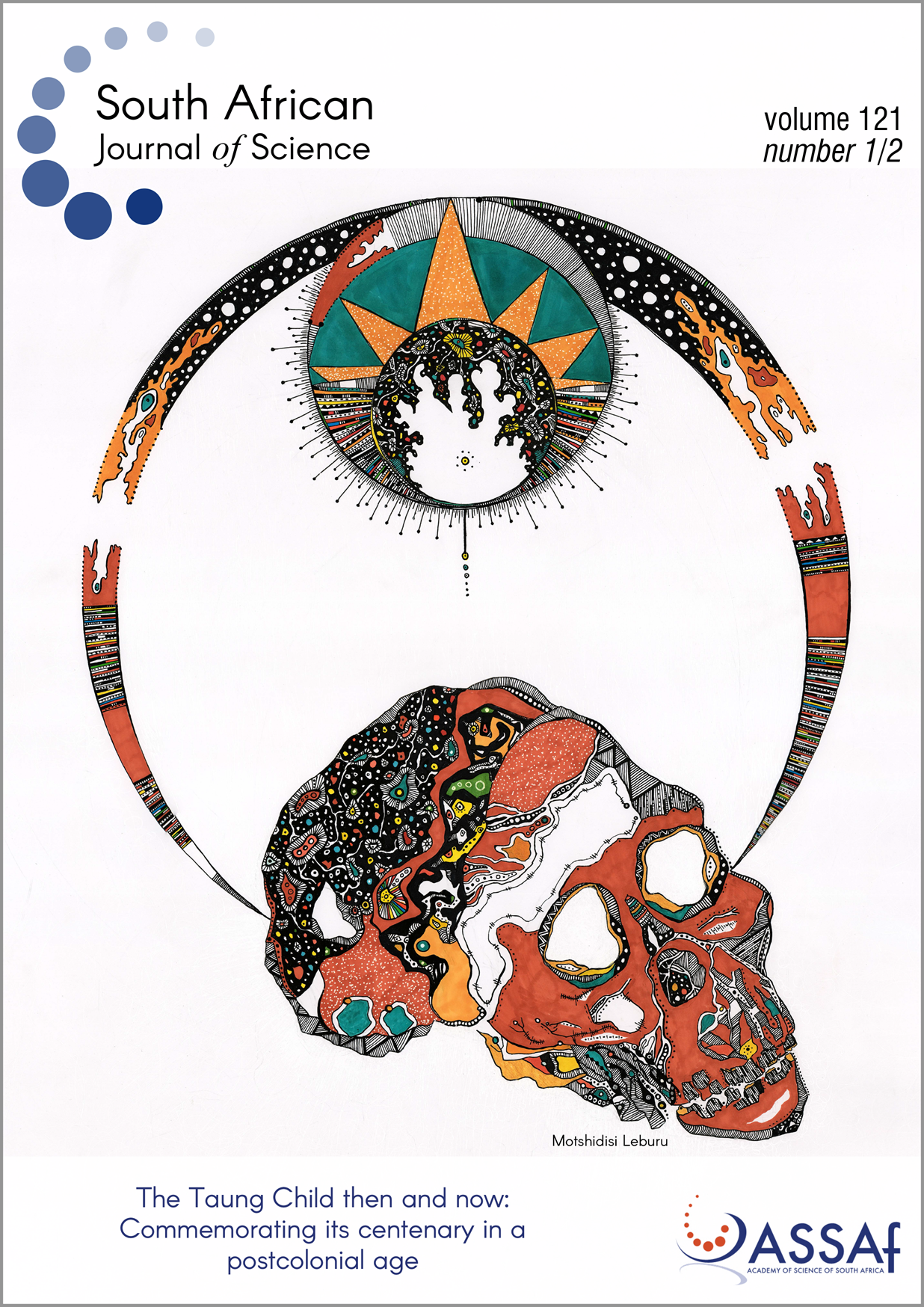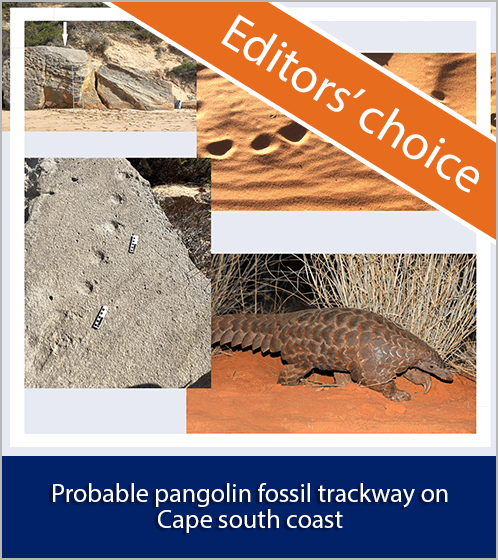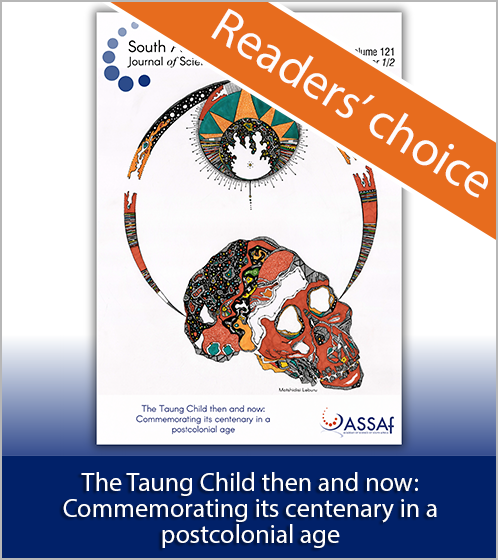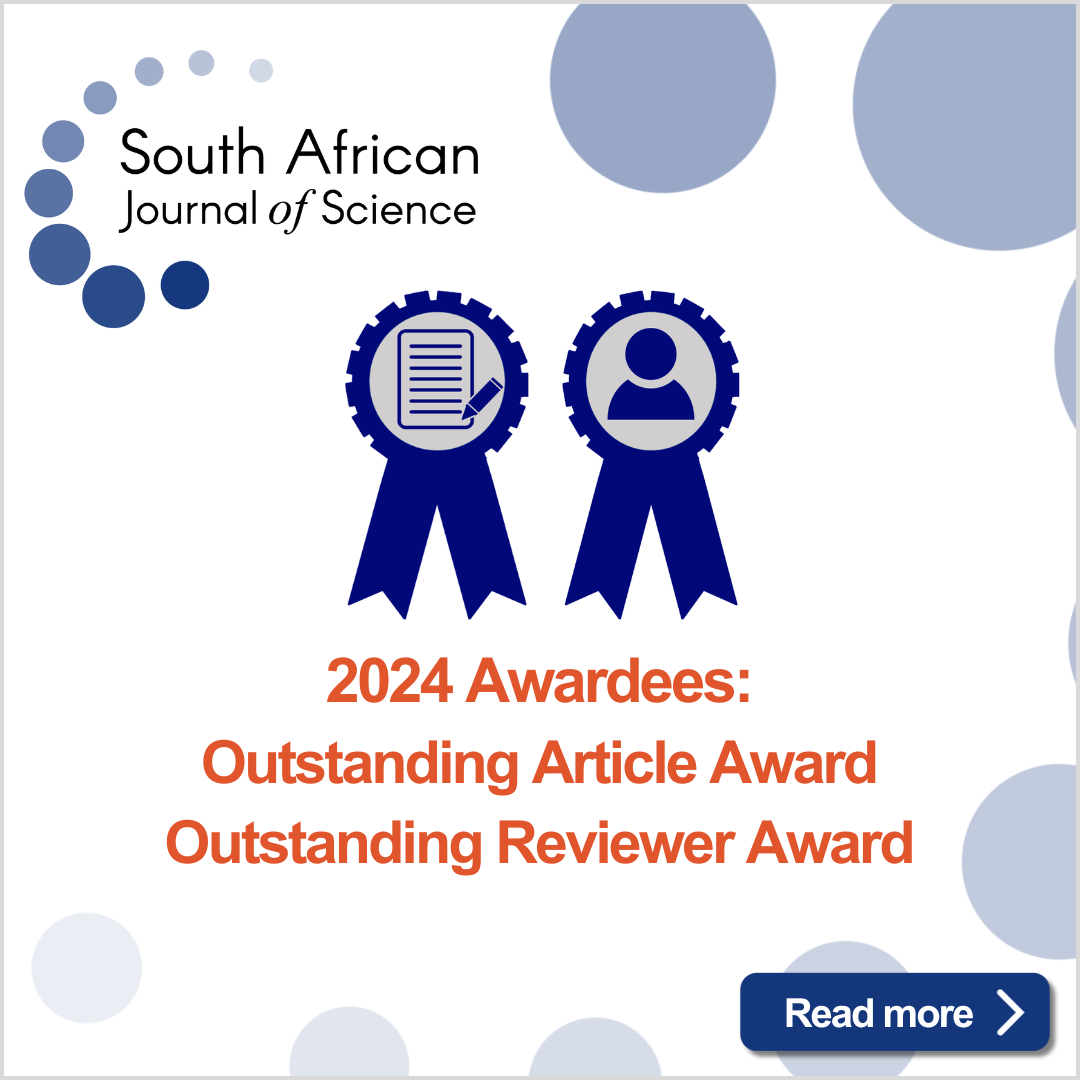Results from an Australopithecus africanus dental enamel fragment confirm the potential of palaeoproteomics for South African Plio-Pleistocene fossil sites
DOI:
https://doi.org/10.17159/sajs.2025/18571Keywords:
Sterkfontein, sex identification, Paranthropus, homininsAbstract
The southern African Late Pliocene to Early Pleistocene hominin record is abundant and exhibits a high taxonomic diversity with three genera represented: Australopithecus, Paranthropus and Homo. Hominin fossil diversity and variation are often contextualised within other fossil assemblages or modern/extant counterparts. However, the incompleteness of the fossil record, sample selection bias and taphonomic condition of the specimens themselves constrain interpretations of diversity and variation within and between species. Thus, species identification and the nature of the observed variation are frequently debated. Palaeoproteomics can help improve our understanding of taxonomic variation, as demonstrated by the recently generated proteome of Paranthropus specimens from Swartkrans. Here, we demonstrate protein preservation for an A. africanus specimen from Sterkfontein Member 4, Sts 63, using minimally invasive analysis, and identify it as belonging to a male individual. We then discuss some of the current limitations of palaeoproteomics and how we can potentially overcome them. Although it is still in its infancy for Plio-Pleistocene hominin fossils, palaeoproteomics has the potential to help unravel the causes of observed morphological variation. Lastly, we strongly believe that the involvement of African researchers at all levels of this research, including leadership, is of great importance.
Significance:
We have successfully determined the biological sex of an Australopithecus africanus specimen (Sts 63) from Sterkfontein Member 4 with the age range of 3.5 to 2.01 Ma, with a high degree of confidence, and we have assessed the extent of protein preservation. These discoveries hold significant implications for our understanding of sexual dimorphism and intraspecies variation as observed in African Plio-Pleistocene hominins.
Open data set : http://proteomecentral.proteomexchange.org (identifier PXD054431)
Downloads
Published
Issue
Section
License

All articles are published under a Creative Commons Attribution 4.0 International Licence
Copyright is retained by the authors. Readers are welcome to reproduce, share and adapt the content without permission provided the source is attributed.
Disclaimer: The publisher and editors accept no responsibility for statements made by the authors
How to Cite
- Abstract 2522
- PDF 968
- EPUB 190
- XML 264
- Peer review history 165
- Abstract in Setswana 188
Funding data
-
Danmarks Grundforskningsfond
Grant numbers PROTEIOS, DNRF128 -
Novo Nordisk Fonden
Grant numbers NNF14CC0001 -
National Research Foundation
Grant numbers 117670, 136512 -
Natural Sciences and Engineering Research Council of Canada
Grant numbers RGPIN-2020-04159 -
Natural Environment Research Council
Grant numbers NE/S010211/1 -
Université de Bordeaux













.png)